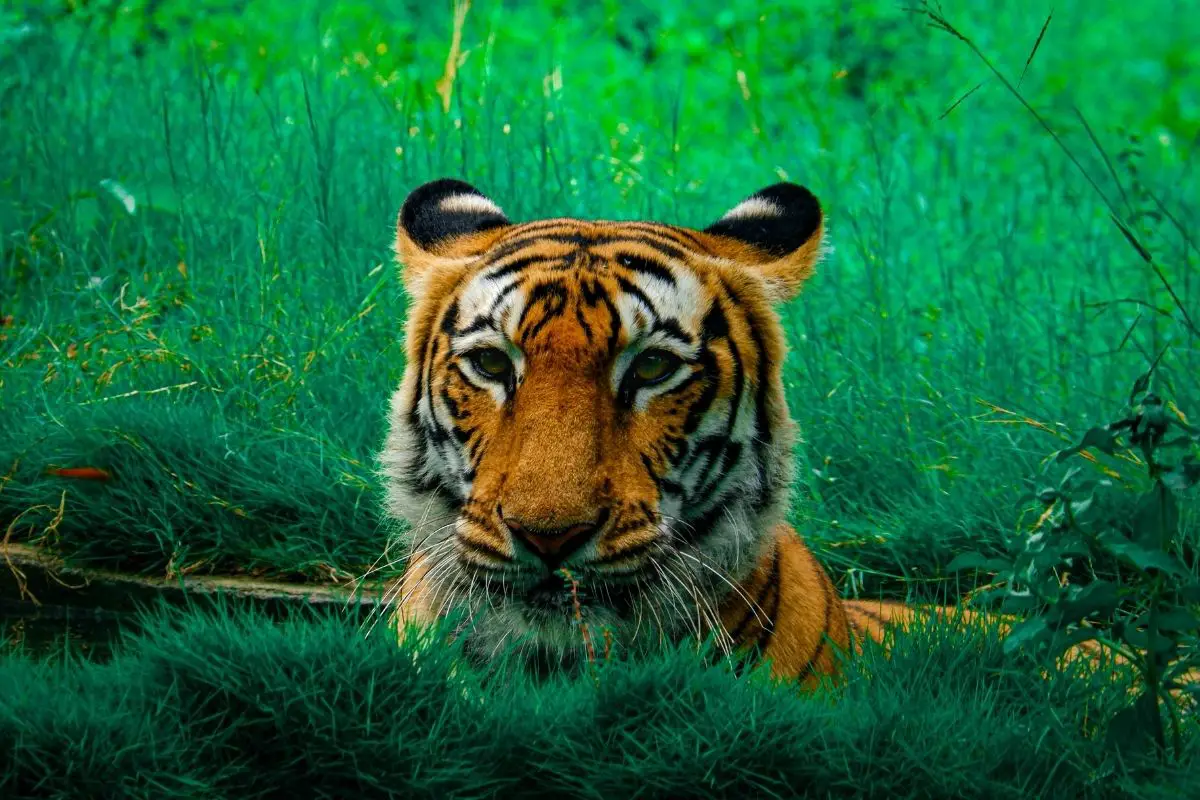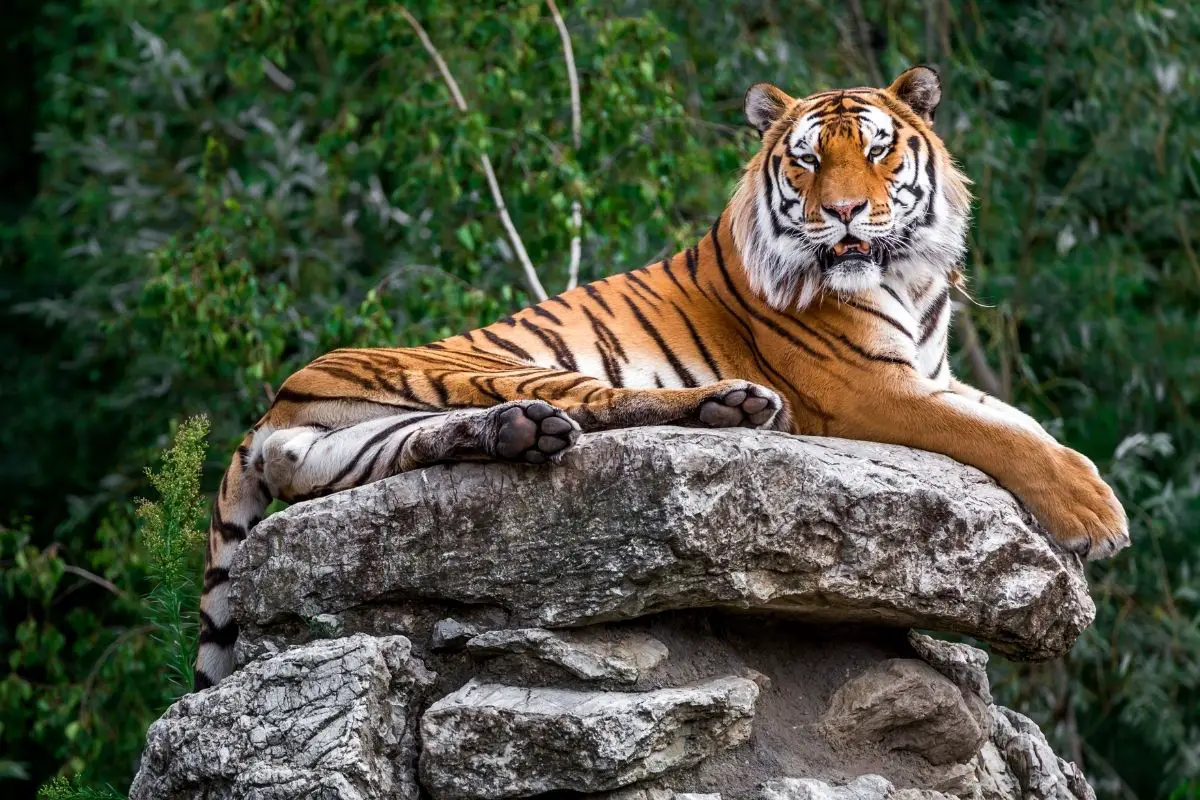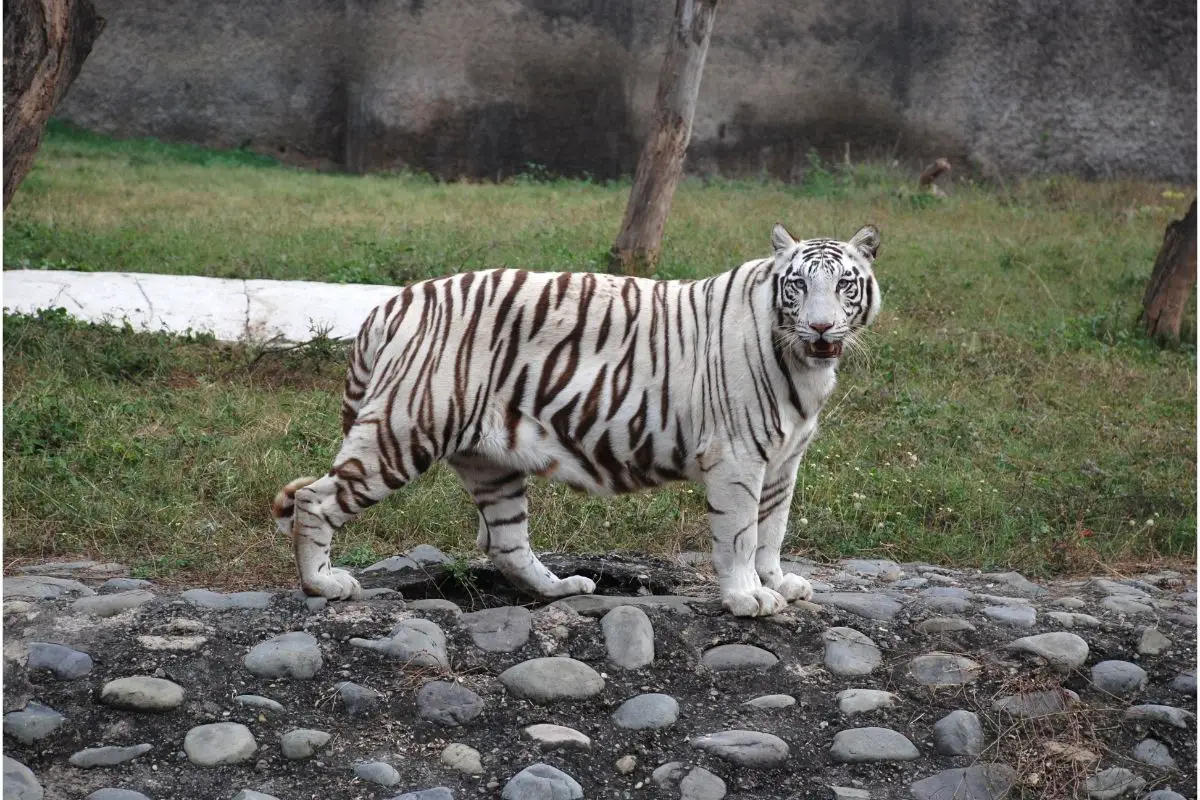Tigers are one of the most beautiful creatures on this planet and can be identified from anywhere by their big stripes and bright orange, golden or white color.

They are dangerous predators yet are highly endangered due to illegal hunting and a reduction in natural habitats.
These animals need all the care and preservation campaigns they can get to survive and we need to focus on preserving natural food sources so those that are still left in the wild can survive.
Despite their road to extinction, tigers are still kings of the jungle and are magnificent creatures with great power and strength.
They are known for hunting prey and their lightning speed and having the power to even crush the skull of any animal they attack.
They are solitary hunters and are known for catching big animals and feeding on their meat to survive.
Tigers are famous for indulging in hundreds of pounds of raw meat and this is what sustains them.
They are mostly fed on carrion meat in captivity, but tigers are also sometimes offered live meals.
This helps them keep their instincts sharp and stops them from becoming bored.
However, with so much meat on their plate, you might be wondering if they have any time to get some fruit and fibers in.
If you have ever wondered whether tigers eat plants and grass, this article is here to help.
Do Tigers Eat Plants And Grass?
If tigers are on the bare minimum and are struggling to find food elsewhere, their only option is usually to turn to plant matter to survive.
If this is the case, they like to eat berries, fruits, and grass to sustain them until they can find prey again.
However, not only does this not fill them up or satisfy their hunger, but they also aren’t very healthy for tigers.
Sure, we may think fruit and berries are healthy for any creature, but since they do not offer the same nutritional value as prey that such big animals like tigers need, they cannot sustain a tiger for very long.
Instead, tigers need to fill up on plenty of protein and fat to stay strong and healthy and this means although they do eat grass, it’s not a long-term alternative to prey.
Berries and grass and other plant matter are only a short-term solution to a shortage of animals and can help to regulate a tiger’s digestive system.
Instead of eating the grass, the grass helps them to catch the prey they need to eat to sustain their energy and power.
They use their dark striped skin as camouflage and can hide themselves out in the long blades of grass until prey approaches.
The grass resembles their vertical pattern and they can blend in with the different light and shades.
Blending in with the grass, allows the prey to get as close as they can before being detected, and then they can quickly launch an attack.
Where Do Tigers Sit On The Food Chain?

Tigers sit right at the top of the food chain and are one of nature’s biggest carnivores.
They eat a variety of prey depending on where they live and this prey ranges from termites to baby rhinos and more.
They are natural hunters and other animals below them in the food chain fear them.
They have no predators above them in the ecosystem and they feed on the primary carnivores and herbivores below them.
The second layer of the food chain is the primary carnivores that tigers hunt and these include foxes and wolves.
These feed on the herbivores at the bottom which consist of animals such as deer, elks, and boars. These feed on the producers such as fish, berries, grass, and trees.
What Do Tigers Eat?
So, we have established that plants and grass are a last resort when sourcing food for tigers, so what do they eat to survive?
Tigers are apex predators and they will eat essentially any animal they can hunt, as long as they have some meat on them.
This means that they will eat whatever is available in their habitat, or whatever meat is given to them in captivity.
These animals include any species of deer, leopards, zebras, wild pigs, gaur, grizzly and black bears, tapirs, buffaloes and rhino calves, horses, wild cattle, moose, goats, and more.
If the large prey they are after is not available, tigers will still be able to get their nutrition from smaller animals such as rodents, hares, frogs, snakes, monkeys, birds, and fishes.
There have been cases in the past where tigers have also eaten humans.
They have pounced on humans and killed them for meat and we even hear horror stories today from remote villages and zoos about tiger attacks due to loss of habitat and a food search.
The human-tiger conflict continues today and this is, unfortunately, one of the reasons contributing to their declining population.
Tigers also need plenty of water to survive. Not only do tigers love soaking in the water to cool off in a hot environment, but they also need lots of fresh water to stay hydrated.
A tiger cannot survive longer than 3 days in most cases without water.
Final Thoughts
We hope you have enjoyed this article on tigers and their diet, and have learned all about why they don’t tend to eat plants and grass.
Although when there is a shortage of prey, they might turn to plant matter to regulate their digestive system, this is not a long-term solution and tigers must have protein and fat in their diets to survive.
They live on the top of the food chain and as one of the most powerful animals in the jungle, can feast on any animal that sits below it.
- Sink Your Teeth Into This: Analyzing the Powerful Lion Bite Force - September 8, 2023
- Siberian Tigers: Everything You Need To Know - September 4, 2023
- Do Lions Eat Humans? Understanding Lion Aggression and Risks - September 4, 2023








